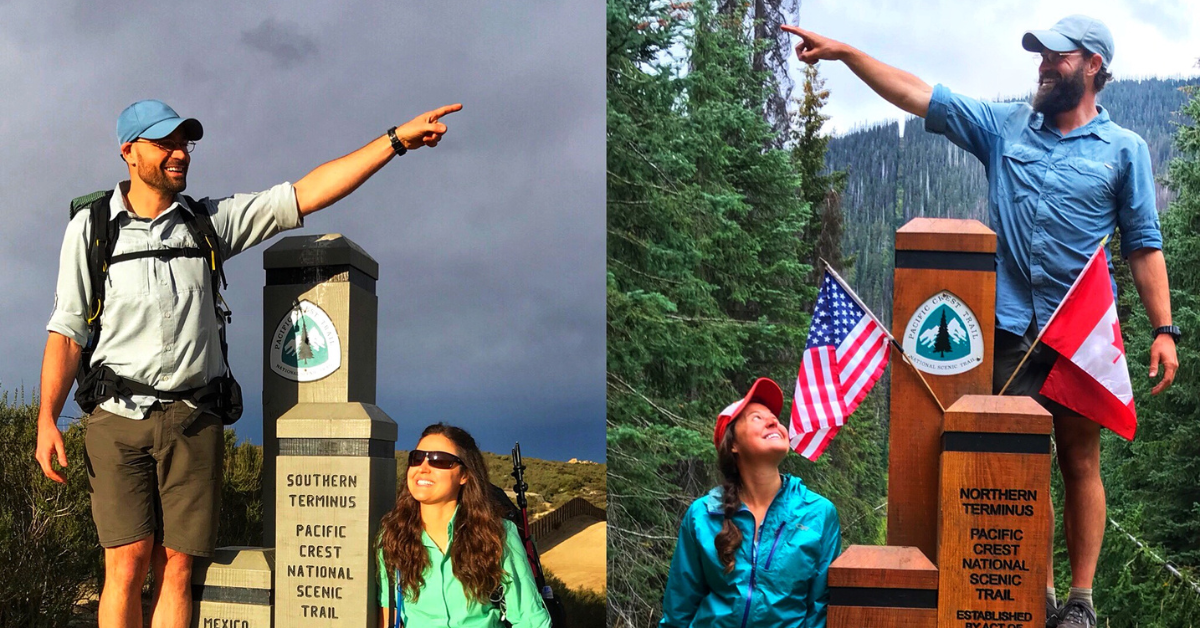Training For A Thru-Hike
Training for a thru-hike will help you reduce the risk of injury and allow you to enjoy your thru-hike more. Over the past few years, my clients have hiked over 50,000 injury-free miles and stayed on the trail until they were ready to come home. Fitness is one aspect to consider for a thru-hike, but so are nutrition, mindset, and self-care. In this post, we’ll look at the physical training to help you build a bulletproof hiker body.
Injuries are a major concern for hikers
The best way to combat injuries is to train for a thru-hike. Improving your strength, endurance, and cardiovascular endurance puts your body in a better position to combat the physical stress of a thru-hike. This means less risk of common overuse injuries, less negative self-talk about being out of shape, and more enjoyment.
Halfway Anywhere and The Trek’s yearly hiker surveys show a similar theme regarding hikers and injuries. A pattern emerges when averaging each of the triple crown trails: the Appalachian Trail (AT), Pacific Crest Trail (PCT), and Continental Divide Trail (CDT) injury rates. An average of 26% of hikes abandon due to injury. However, the data doesn’t provide the full picture. For example, those more likely to fill out the survey were more likely than not successful in their hike attempt or did a large percentage of the miles. If a hiker only completes a few hundred miles and elects to end their hike due to injury, they are unlikely to participate in the survey.
Actual completion percentages are unclear as there is no feasible way to track every hiker. In previous years, the Pacific Crest Trail Association estimated a completion percentage of 25% of hikers. Estimates in recent years are similar for the AT and CDT. Injuries, mindset, and finances are the usual suspects for ending a hike, and most often, injuries top the list for the AT, PCT, and CDT.
Training For A Thru-Hike
Not only will training beforehand strengthen your joints, ligaments, tendons, and muscles, but it will also improve your odds of completing your hike. Here’s the thing, it takes time for your body to adapt to training. Most of my clients spend 12-16+ weeks preparing and they have an outstanding completion rate of 73%, nearly triple the current predicted average.

Make lunges a staple in your pre-hike training!
Did you know that only about 50% of hikers surveyed say they trained before a thru-hike? In reflection, hikers also wish they had trained more before their hike.
The majority of injuries occur in the first 25% of the trail. It’s the increased stress on the body that it is NOT prepared to handle.
Training before you go improves your overall fitness, lowering the physical stress at the start of the hike and decreasing your odds of an injury.
Muscles take around 90 days to completely regenerate. Tendons and ligaments take 200-210 days (~7 months!) to regenerate and become stronger with the adaptive stress of training. That means you must consistently train long before you start your hike to build strong tendons (muscle to bone) and ligaments (bone to bone).
A well-rounded program should include exercises for hikers’ upper and lower body, core, hips, and commonly injured areas. Specifically, the lower leg, calves, shins, ankle stabilizers, and feet. Alongside strength workouts, cardio workouts, hill intervals, loaded pack walks, and training hikes should be included. It can feel overwhelming to lay out, so I’ll provide a basic framework.
Putting It All Together
Week 1-3 should have 2-3 strength workouts, one cardio workout, one loaded pack walk, and one hike per week.
For weeks 4-6, the first three weeks of workouts should be progressed. Increase the cardio interval time and pack weight for the loaded pack walk. You should also progress the distance and pack weight for the training hike.
In weeks 7-9, replace loaded pack walks with hill intervals. Depending on your hike needs, continue with cardio intervals, double up on the hill intervals, or add another cardio workout you enjoy. Strength training and training hikes progress as well.
During weeks 10-12, you’ll add a pack to hill intervals and increase the time. The other workouts also progress with your longest training hike planned for week 11.
Don’t make these common training mistakes
Very few hikers quit because they choose the wrong backpack or degree of a sleeping bag or decide to go stoveless. Too much time is given to logistics, gear choices, and resupply points but little consideration for training. Make a training plan and stick with it. Or hire a trainer like me to build a program specifically for your goals. I’ve got a proven track record, and 92% of my clients stay injury-free on their thru-hike.
It’s not enough to say that you will get in shape on the trail—that’s a common misconception among hikers. You WILL get stronger and adapt, but it takes time. A short weekend hike one or two times a month isn’t going to prepare you for 20-mile days, and jogging a few miles each week isn’t quite the dose of training you need, either.
Regarding training hikes, many hikers load up a pack with 35 lbs and slowly add 1-2 miles each week to build their strength and endurance. This method can work, but it’s much less comfortable than simultaneously building pack weight and mileage. Ease into training to help reduce injury risk before your hike begins by training smarter!
Cardio intensity matters when training for a thru-hike. Don’t spend time doing high-intensity cardio, box jumps, burpees, or jogging to train. You’ll optimize your training time more by working out at the right intensity and doing the right types of exercise.
updated 5/13/2024


Recent Comments